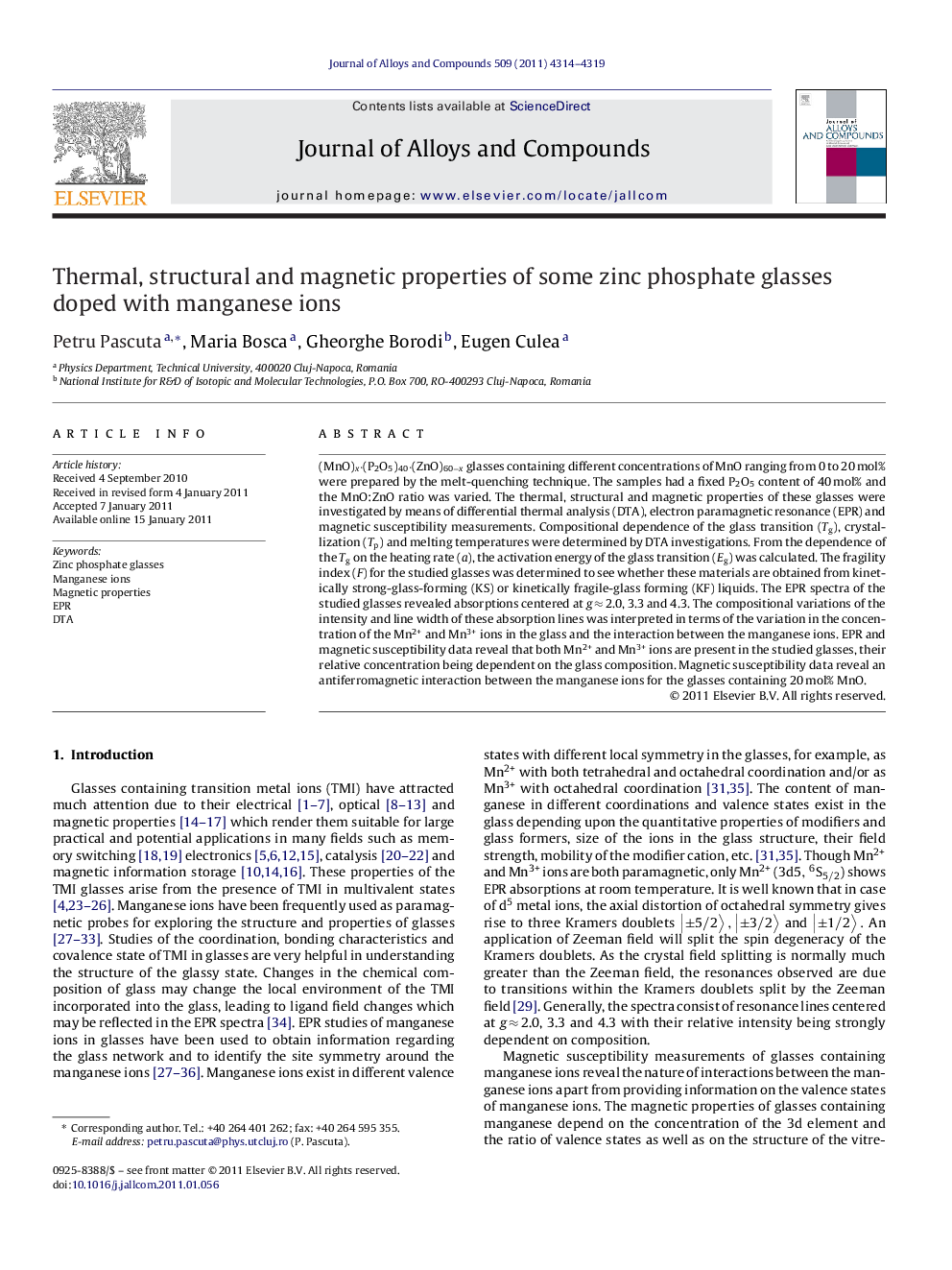| Article ID | Journal | Published Year | Pages | File Type |
|---|---|---|---|---|
| 1617423 | Journal of Alloys and Compounds | 2011 | 6 Pages |
(MnO)x·(P2O5)40·(ZnO)60−x glasses containing different concentrations of MnO ranging from 0 to 20 mol% were prepared by the melt-quenching technique. The samples had a fixed P2O5 content of 40 mol% and the MnO:ZnO ratio was varied. The thermal, structural and magnetic properties of these glasses were investigated by means of differential thermal analysis (DTA), electron paramagnetic resonance (EPR) and magnetic susceptibility measurements. Compositional dependence of the glass transition (Tg), crystallization (Tp) and melting temperatures were determined by DTA investigations. From the dependence of the Tg on the heating rate (a), the activation energy of the glass transition (Eg) was calculated. The fragility index (F) for the studied glasses was determined to see whether these materials are obtained from kinetically strong-glass-forming (KS) or kinetically fragile-glass forming (KF) liquids. The EPR spectra of the studied glasses revealed absorptions centered at g ≈ 2.0, 3.3 and 4.3. The compositional variations of the intensity and line width of these absorption lines was interpreted in terms of the variation in the concentration of the Mn2+ and Mn3+ ions in the glass and the interaction between the manganese ions. EPR and magnetic susceptibility data reveal that both Mn2+ and Mn3+ ions are present in the studied glasses, their relative concentration being dependent on the glass composition. Magnetic susceptibility data reveal an antiferromagnetic interaction between the manganese ions for the glasses containing 20 mol% MnO.
Research highlights▶ MnO)x·(P2O5)40·(ZnO)60−x glasses (0 ≤ x ≤ 20 mol%) were prepared by the melt-quenching technique. ▶ The DTA data indicate a good thermal stability of the studied glasses. ▶ EPR spectra shows isolated Mn2+ ions in octahedral symmetric sites or to associated ones when the Mn2+ ions are involved in dipole–dipole and/or superexchange interactions. ▶ The magnetic susceptibility data revealed superexchange magnetic interactions involving manganese ions, antiferromagnetically coupled for the sample containing 20 mol% MnO.
